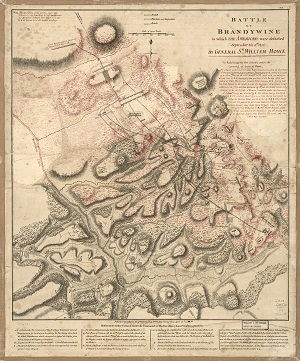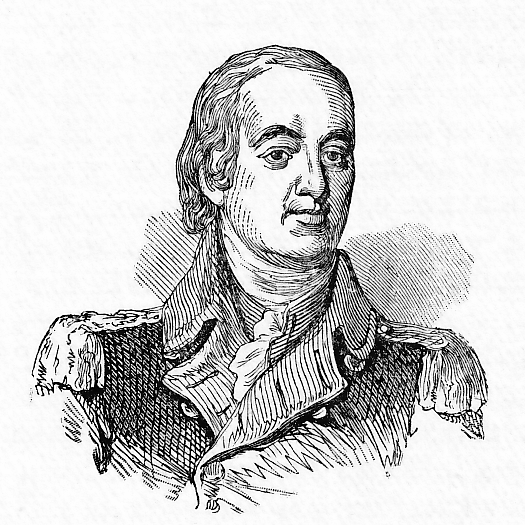Washington, Flanking, and the Brandywine Fords

This map of the Battle of the Brandywine was created in 1784 in London by William Faden and S.W. Werner
Library of Congress digital id: http://hdl.loc.gov/loc.gmd/g3824c.ar133800
Click here for a very large and detailed image
Note that, among other changes, someone has crossed out "Rebel" and replaced it with "American"
Washington had surveyed the Brandywine region in June 1777. It was clear that the Brandywine would serve as a formidable line of defense should Howe decide to attack from the south or west, in an approach to Philadelphia. He had a map of the area made for him by a Delaware surveyor.
In a War Council meeting held on the 9th of September, several of Washington's generals voiced concern that Howe would try a flanking movement similar to the one he used successfully in the Battle of Long Island in 1776.
Washington called in several Brandywine Valley farmers and probed them. They assured him that the Brandywine was basically impassable above Buffington's Ford on the north. One farmer did tell the Council of a Trimble's Ford, located several miles north of Buffington's, but to get to that ford, the British would have to take a "long circuit through a very Bad Road."
The farmers' testimony convinced Washington that he could protect his position by placing his troops for about five miles along the Creek, stretching from Pyle's Ford in the south to Buffington's Ford to the northwest. By covering the fordable points, Washington expected to thwart any British advance.

This engraving of Major General William Alexander Stirling appeared in the 1905 Harper's Encyclopędia of United States History, Vol. I,
Just to be vigilant, Washington positioned reserve divisions of General Stirling and General Stephen to protect him against the northern flanking possibility.
It is interesting to note that General Sullivan, who more than some was convinced that Howe might "try to come around our right flank," did not position his troops appropriately before and during the battle once he had received information that the flanking was indeed occurring. He was found innocent at his court-martial for his behavior during the battle. Some observers, to this day, place the blame for losing the battle on Sullivan's shoulders. He never recovered his reputation.



